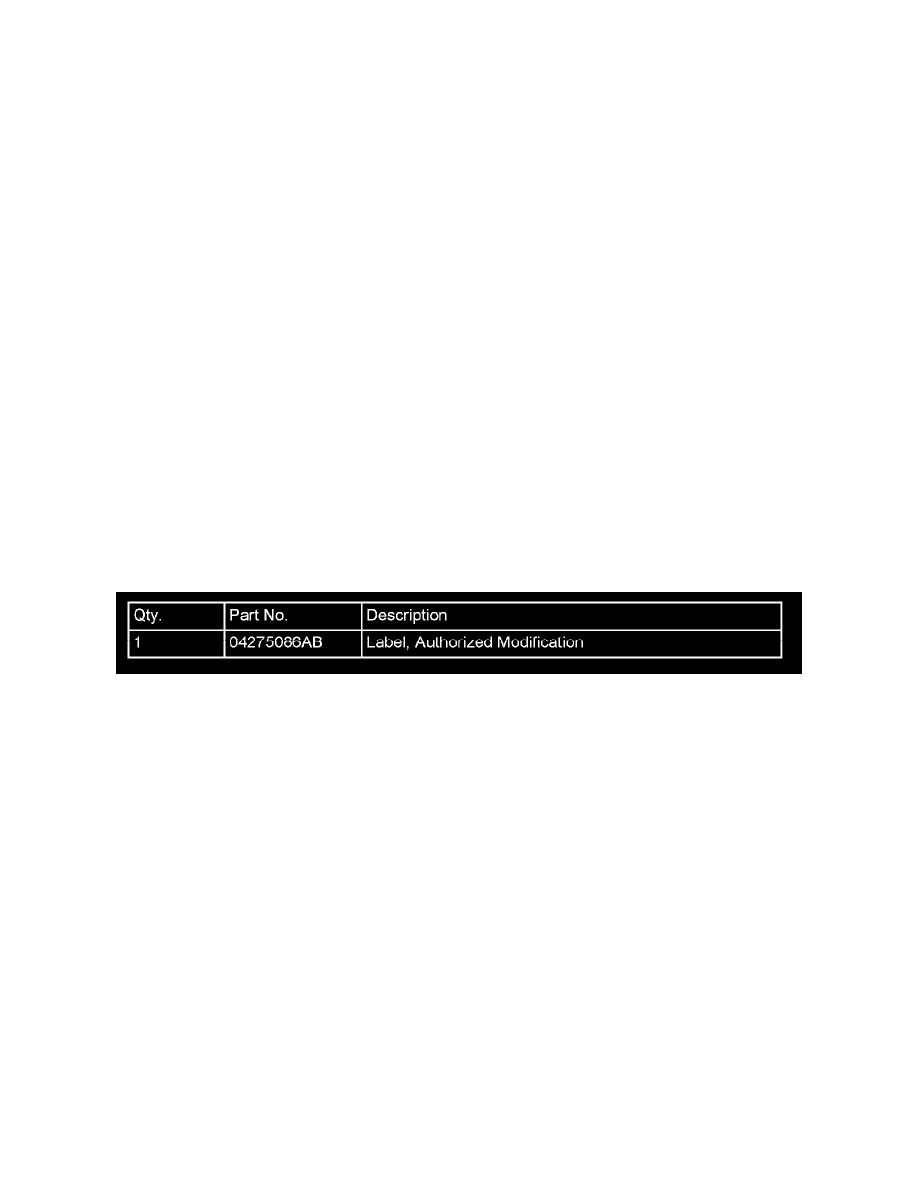RAM 3500 HD Truck 2WD L6-6.7L DSL Turbo (2008)

^
P0087 - Fuel Rail Pressure Too Low
^
P0106 - Manifold Absolute Pressure Sensor Performance
^
P0191 - Fuel Rail Pressure Sensor Circuit Performance
^
P1011 - Fuel Pump Delivery Pressure Too Low
^
P2299 - Brake Pedal Position / Accelerator Pedal Position Incompatible
^
P2262 - Turbocharger Boost Pressure Not Detected - Mechanical
Other updates will include the following operational and diagnostic improvements:
1. Stationary DeSoot is now available with this software. This feature works similar to pick up truck (DH/D1) models.
2. New DTC added for P2563 - Turbocharger Boost Control Position Sensor Performance. This DTC indicates diminished variable geometry
turbocharger travel, which is resolved by replacing the turbocharger. Diagnosis and repair procedures for the DTC have been published in
DTC-Based Diagnostics in TechConnect.
3. The latest PCM software includes a new extended idle feature to accommodate the extended idle times present in some duty cycles. This feature may
help to reduce the accumulation of soot in the exhaust aftertreatment system when the engine is idling for an extended period of time. Briefly how
this feature works:
a. As needed, the engine enters an idling mode which dramatically reduces the rate of soot accumulation in the diesel particulate filter (called "Net
Zero"). Further, under extended idle periods of 5 minutes or longer, the engine enters a mode which reduces the amount of soot accumulated in
the diesel particulate filter (called "Net Reduction"). While in these modes, the idle speed increases to 900 RPM for a period of time. The idle
speed may return to normal idle speed and then return to 900 RPM to repeat this cycle during very long idle periods.
b. These modes occur automatically depending on the need to regenerate the DPF as long as the vehicle is not driven over 20 MPH or operated at
high load. If the vehicle is driven over 20 MPH normal mobile desoot will occur automatically.
4. New scan tool driven fuel system diagnostic tests (same as previously released in the pick up) now available for cab chassis.
DIAGNOSIS:
1. Using the scan tool, determine current software level of the PCM and CCN. Record on the repair order, for later use, the current PCM and CCN
software level part numbers. Proceed to the next step.
2. Compare the current PCM software level part number with software available in the scantool. Determine if the current PCM software level part
number, recorded in Step # 1, is programmable to a higher level.
3. Is the part number of the current PCM level software (recorded in Step # 1) at the latest level listed in the scan tool?
a. If YES >> then the PCM DOES NOT require reprogramming as part of this repair. Record this on the repair order for later reference. Proceed to
the next step.
b. If NO >> then the PCM DOES require reprogramming as part of this repair. Record this on the repair order for later reference. Proceed to the
next step.
4. Is the vehicle a 2007 OR 2008 MY?
a. Yes >>> Proceed to Step # 5.
b. No >>> 2009 MY proceed to the REPAIR PROCEDURE as required.
5. Determine if the current CCN module level software part number, that was recorded earlier in Step # 1, is one of the following (or with a higher
suffix):
